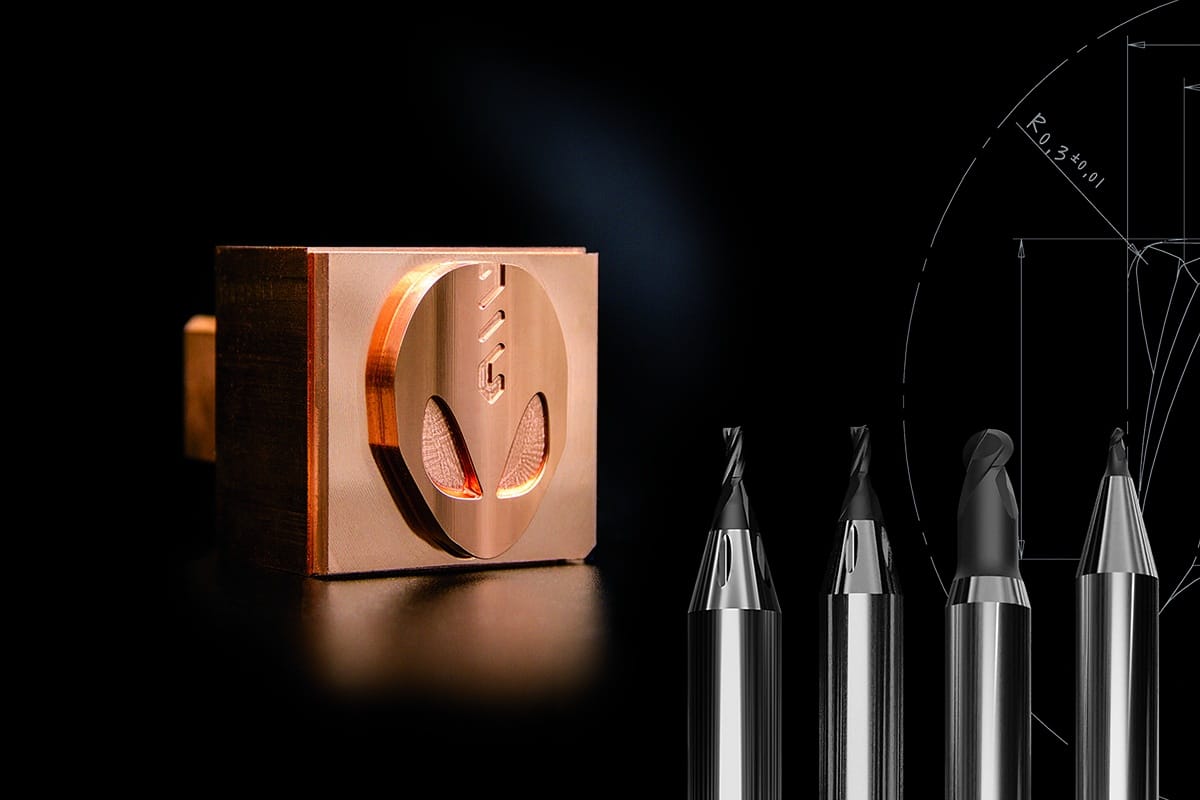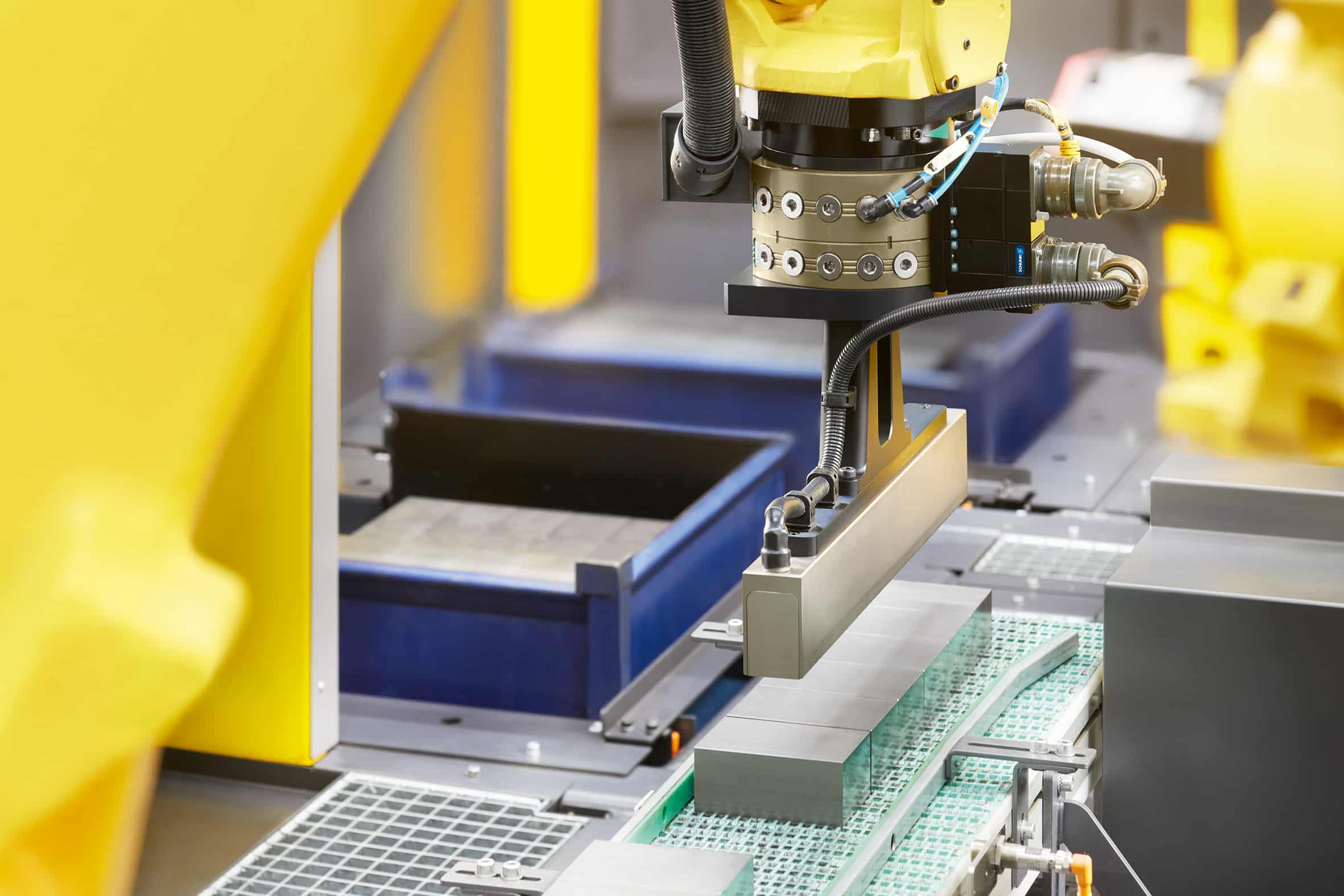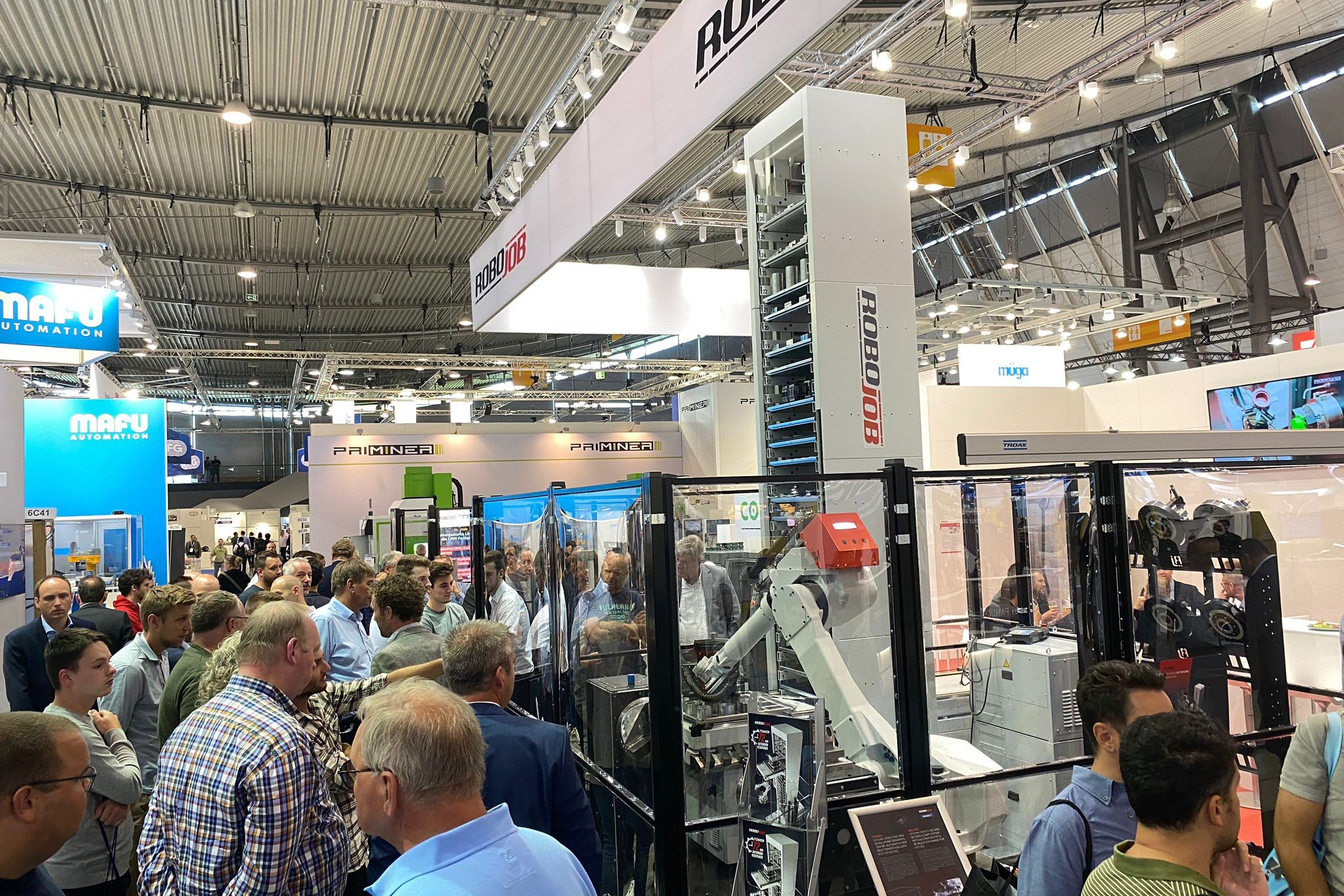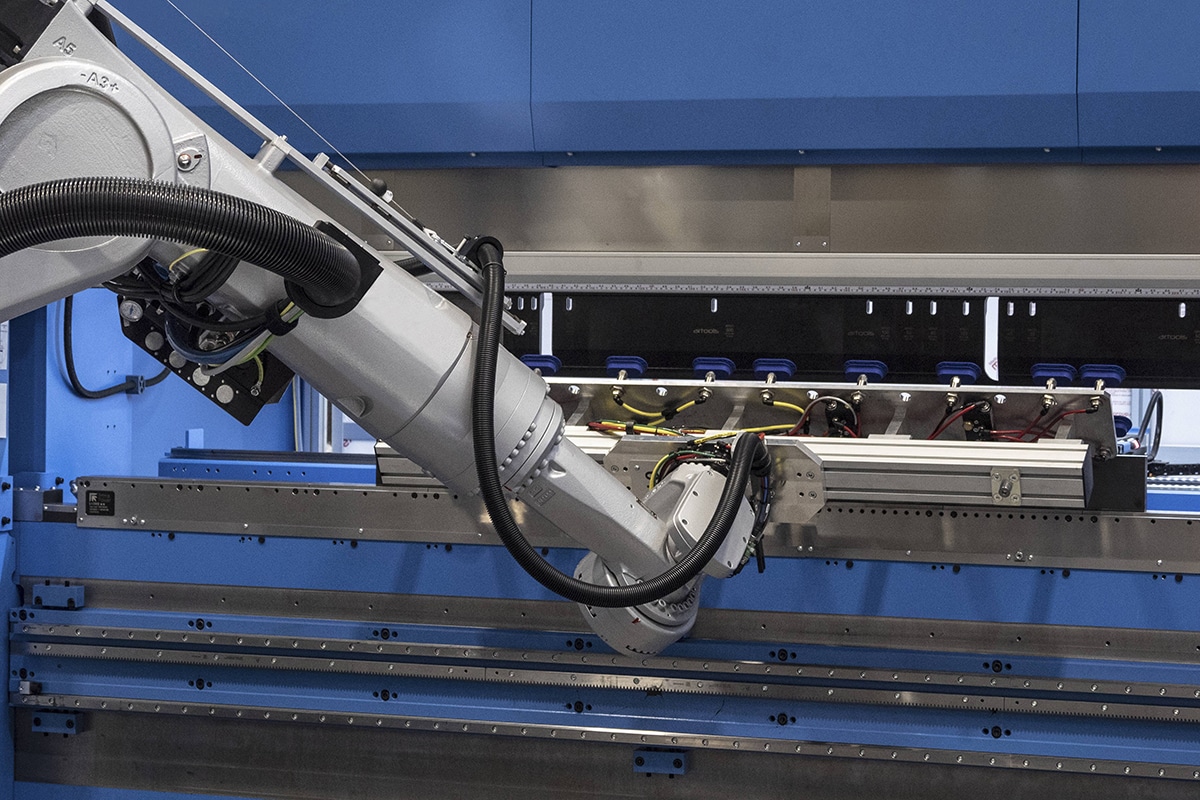The European project AVANGARD aims to develop a light and safe electric vehicle for passenger transport in cities. The project contributes to the use of high strength steels by researching and developing an innovative chassis for electric vehicles. This must meet structural and safety requirements and will form the backbone for the design of a new generation of lightweight electric vehicles. Dual Phase steels are being used in this development. These are innovative materials that obtain their properties through a unique structure consisting of two phases (ferritic-martensitic microstructure). A major concern is to detect weld defects quickly, reliably and cost-effectively. Current destructive and non-destructive techniques are time-consuming and expensive and are not always suitable for assessing weld quality. With real-time quality control systems, the current limitations of conventional characterization techniques can be overcome. A promising technique for this purpose is acoustic emission monitoring (AEM).
The AEM technique is based on the detection and conversion of high-frequency waves into electrical signals. Acoustic emission occurs during the creation of a welded joint, as a result of the formation of the weld, the occurrence of defects or interfering influences. The form in which acoustic emission occurs depends on the welding process, material, temperature and geometry of the workpiece. The fundamental objective of monitoring via acoustic emission during welding is to obtain useful information about the quality of the joints during welding. By using the correct equipment and settings and the corresponding analysis software, the different sources of acoustic emission can be distinguished and possible welding errors can be demonstrated and possibly corrected during the welding process.
Benefits of real-time quality control
Real-time control of weld quality reduces destructive testing and scrap. Such systems provide flexibility in production, the ability to control 100% of welds, thus reducing the cost of energy, material and manpower. Real-time control can eliminate or significantly reduce post-production spot inspection, reduce the number of destructive tests and increase the reliability of welding processes and finished products. If sufficient accuracy and precision of measurement techniques are achieved, weld quality can be guaranteed synchronously with production. Real-time monitoring of weld quality allows parameter adjustments to be made during the process itself to correct welding errors.

Experimental research
During the AVANGARD project, experiments were conducted for monitoring robotic MIG/MAG welding based on acoustic emissions. Different types of sensors were used; piezoelectric sensors and a microphone. The welding experiments were performed for fillet welds (see Figure 2). Welds were performed with the different parameter settings of the welding process. Welds performed with optimal parameters served as a reference. In addition, welds were performed where a particular parameter was varied; for example, welding speed, projection length, torch position or angle, and welding direction (pulling or pushing), with the aim of introducing welding errors. The cobot used for the experimental work is a Universal Robotics UR10 with a MIGATRONICS Sigma Select 400 power source; see Figure 3). The standard 'ISO 5817:2014 : Welding - Fusion welded joints in steel, nickel, titanium and their alloys (laser welding and electron beam welding excluded) - Quality levels for imperfections' was used to assess weld quality. This international standard details the quality levels for imperfections in fusion welded joints in steels, such as cracks, porosities and voids, solid inclusions, lack of penetration and incomplete penetration, form imperfections and multiple imperfections.
Application of artificial intelligence methods for welding quality monitoring
Artificial intelligence offers enormous potential for analyzing measurement data and monitoring the quality of welds and welded products. Data-driven AI models were developed by the company OQTON, and used to predict weld quality and recognize and classify occurring imperfections based on the noise produced by a weld. Welding voltage and current were also used for analysis through the AI models. The extent to which anomalies in the acoustic spectrum can be linked to the type of weld imperfection, defined according to ISO 5817, was investigated. In other words, can the observed acoustic spectrum make a statement about the type of weld imperfection present in the weld and where in the weld this imperfection occurs. Furthermore, based on the relevant acoustic spectra, it was also investigated whether a weld imperfection is acceptable or not, according to ISO 5817 (quality level C). The accuracy of these models for extracting the information from all measurements was determined. In this way, it is not only possible to detect welding imperfections in real time, but also to immediately assign a rating to them based on the transmitted acoustic spectrum. If the welding imperfection is not acceptable, it is possible in continuous plants (e.g., robotic plants) to have the system respond adaptively based on this data by adjusting the welding parameters. From the table we can conclude that we can get more information from the auditory signals than from the process parameters. This is confirmation that the use of AEM can improve real-time monitoring of welding processes. It should be noted that these results were obtained from a limited amount of data (20 minutes of audio). The performance of the model can be improved if more measurements are made.

Conclusions
A promising method for quality assurance is acoustic emission monitoring. This method is a non-destructive testing technique that can be used during the welding process and provides the opportunity to test the quality of all welds. Acoustic emission monitoring as a non-destructive testing method was developed on the basis that every material exhibits natural vibrations and that machines and processes emit sounds. The Belgian Institute of Welding Technology, in collaboration with OQTON, is conducting a research project to investigate the potential of this technique and test it in practice. The goal is to evaluate this technology for arc welding. Welding tests were conducted with different process conditions to produce welds with different quality levels.
Data-driven AI models were used to predict weld quality and potential defects based on sounds recorded during welding. For robotic MIG/MAG welding of fillet welds, the acoustic emission measurements were linked to the types of weld imperfections defined according to ISO 5817. The observed acoustic spectrum can provide a statement about the type of weld imperfection present in the weld and where in the weld this imperfection occurs. With the AI models, it is also possible to predict whether a particular weld imperfection is acceptable or not according to EN ISO 5817 (quality level C).
Further research - Call for participation in further research
Research into this monitoring technique will continue. It will also be investigated whether combining different sensors can provide better analysis. For more information, interested companies can contact Koen Faes (koen.faes@bil-ibs.be) of the Belgian Institute for Welding Technology.
Thank you
AVANGARD is supported by the European Union's Horizon 2020 research and development program, under contract No. 869986.
Real-time quality monitoring of fillet welds in high strength steels
The European project AVANGARD aims to develop a light and safe electric vehicle for passenger transport in cities. The project contributes to the use of high strength steels by researching and developing an innovative chassis for electric vehicles. This must meet structural and safety requirements and will form the backbone for the design of a new generation of lightweight electric vehicles. Dual Phase steels are being used in this development. These are innovative materials that obtain their properties through a unique structure consisting of two phases (ferritic-martensitic microstructure). A major concern is to detect weld defects quickly, reliably and cost-effectively. Current destructive and non-destructive techniques are time-consuming and expensive and are not always suitable for assessing weld quality. With real-time quality control systems, the current limitations of conventional characterization techniques can be overcome. A promising technique for this purpose is acoustic emission monitoring (AEM).
The AEM technique is based on the detection and conversion of high-frequency waves into electrical signals. Acoustic emission occurs during the creation of a welded joint, as a result of the formation of the weld, the occurrence of defects or interfering influences. The form in which acoustic emission occurs depends on the welding process, material, temperature and geometry of the workpiece. The fundamental objective of monitoring via acoustic emission during welding is to obtain useful information about the quality of the joints during welding. By using the correct equipment and settings and the corresponding analysis software, the different sources of acoustic emission can be distinguished and possible welding errors can be demonstrated and possibly corrected during the welding process.
Benefits of real-time quality control
Real-time control of weld quality reduces destructive testing and scrap. Such systems provide flexibility in production, the ability to control 100% of welds, thus reducing the cost of energy, material and manpower. Real-time control can eliminate or significantly reduce post-production spot inspection, reduce the number of destructive tests and increase the reliability of welding processes and finished products. If sufficient accuracy and precision of measurement techniques are achieved, weld quality can be guaranteed synchronously with production. Real-time monitoring of weld quality allows parameter adjustments to be made during the process itself to correct welding errors.

Experimental research
During the AVANGARD project, experiments were conducted for monitoring robotic MIG/MAG welding based on acoustic emissions. Different types of sensors were used; piezoelectric sensors and a microphone. The welding experiments were performed for fillet welds (see Figure 2). Welds were performed with the different parameter settings of the welding process. Welds performed with optimal parameters served as a reference. In addition, welds were performed where a particular parameter was varied; for example, welding speed, projection length, torch position or angle, and welding direction (pulling or pushing), with the aim of introducing welding errors. The cobot used for the experimental work is a Universal Robotics UR10 with a MIGATRONICS Sigma Select 400 power source; see Figure 3). The standard 'ISO 5817:2014 : Welding - Fusion welded joints in steel, nickel, titanium and their alloys (laser welding and electron beam welding excluded) - Quality levels for imperfections' was used to assess weld quality. This international standard details the quality levels for imperfections in fusion welded joints in steels, such as cracks, porosities and voids, solid inclusions, lack of penetration and incomplete penetration, form imperfections and multiple imperfections.
Application of artificial intelligence methods for welding quality monitoring
Artificial intelligence offers enormous potential for analyzing measurement data and monitoring the quality of welds and welded products. Data-driven AI models were developed by the company OQTON, and used to predict weld quality and recognize and classify occurring imperfections based on the noise produced by a weld. Welding voltage and current were also used for analysis through the AI models. The extent to which anomalies in the acoustic spectrum can be linked to the type of weld imperfection, defined according to ISO 5817, was investigated. In other words, can the observed acoustic spectrum make a statement about the type of weld imperfection present in the weld and where in the weld this imperfection occurs. Furthermore, based on the relevant acoustic spectra, it was also investigated whether a weld imperfection is acceptable or not, according to ISO 5817 (quality level C). The accuracy of these models for extracting the information from all measurements was determined. In this way, it is not only possible to detect welding imperfections in real time, but also to immediately assign a rating to them based on the transmitted acoustic spectrum. If the welding imperfection is not acceptable, it is possible in continuous plants (e.g., robotic plants) to have the system respond adaptively based on this data by adjusting the welding parameters. From the table we can conclude that we can get more information from the auditory signals than from the process parameters. This is confirmation that the use of AEM can improve real-time monitoring of welding processes. It should be noted that these results were obtained from a limited amount of data (20 minutes of audio). The performance of the model can be improved if more measurements are made.

Conclusions
A promising method for quality assurance is acoustic emission monitoring. This method is a non-destructive testing technique that can be used during the welding process and provides the opportunity to test the quality of all welds. Acoustic emission monitoring as a non-destructive testing method was developed on the basis that every material exhibits natural vibrations and that machines and processes emit sounds. The Belgian Institute of Welding Technology, in collaboration with OQTON, is conducting a research project to investigate the potential of this technique and test it in practice. The goal is to evaluate this technology for arc welding. Welding tests were conducted with different process conditions to produce welds with different quality levels.
Data-driven AI models were used to predict weld quality and potential defects based on sounds recorded during welding. For robotic MIG/MAG welding of fillet welds, the acoustic emission measurements were linked to the types of weld imperfections defined according to ISO 5817. The observed acoustic spectrum can provide a statement about the type of weld imperfection present in the weld and where in the weld this imperfection occurs. With the AI models, it is also possible to predict whether a particular weld imperfection is acceptable or not according to EN ISO 5817 (quality level C).
Further research - Call for participation in further research
Research into this monitoring technique will continue. It will also be investigated whether combining different sensors can provide better analysis. For more information, interested companies can contact Koen Faes (koen.faes@bil-ibs.be) of the Belgian Institute for Welding Technology.
Thank you
AVANGARD is supported by the European Union's Horizon 2020 research and development program, under contract No. 869986.



